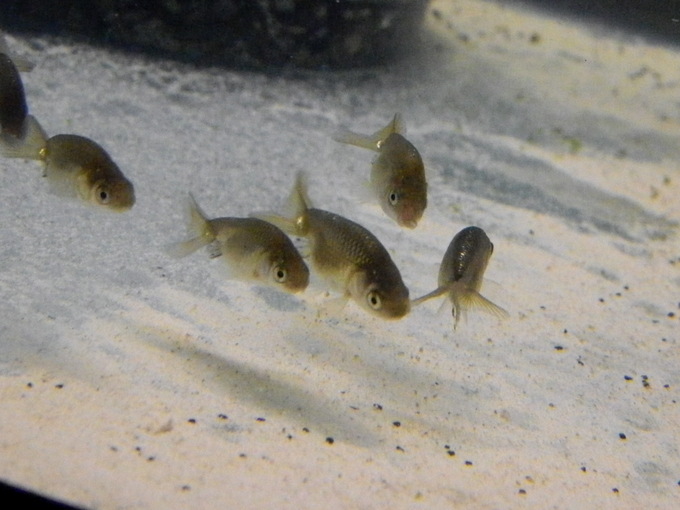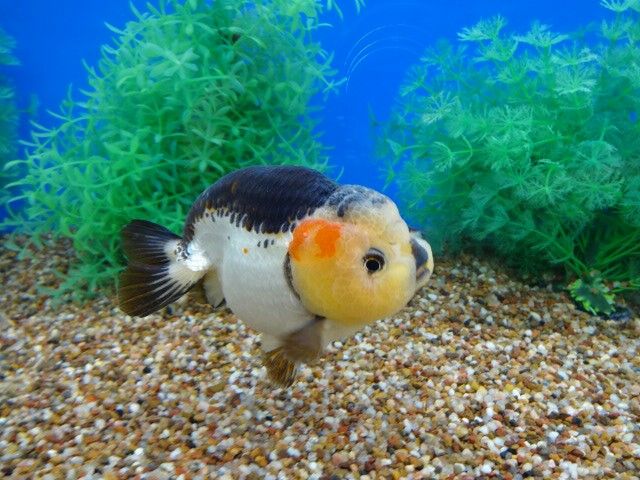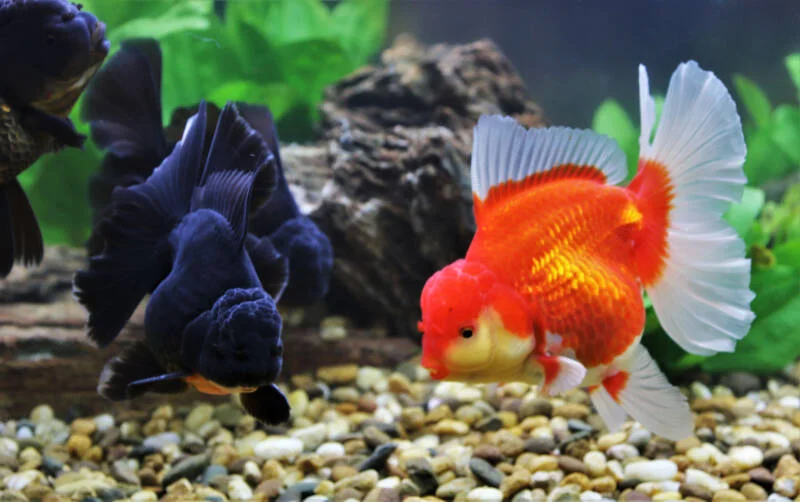
Cleaning substrates in your goldfish tank might sound about as much fun as a root canal, but hold on to your fishnets, because you’re in for a surprise! This essential chore is not only key to your goldfish’s health, but it’s also way more fascinating than you might think. Substrates, those unsung heroes of the underwater world, provide a luxury bed for your goldfish and a high-rent district for your plants.
However, like any bustling neighborhood, they can get a bit grimy. But don’t despair, this blog post is your ultimate guide to substrate TLC. We’ll dive deep into the world of substrate selection, maintenance, and common myths, so your goldfish can keep swimming high in their spick-and-span aquatic wonderland!
Understanding Substrates
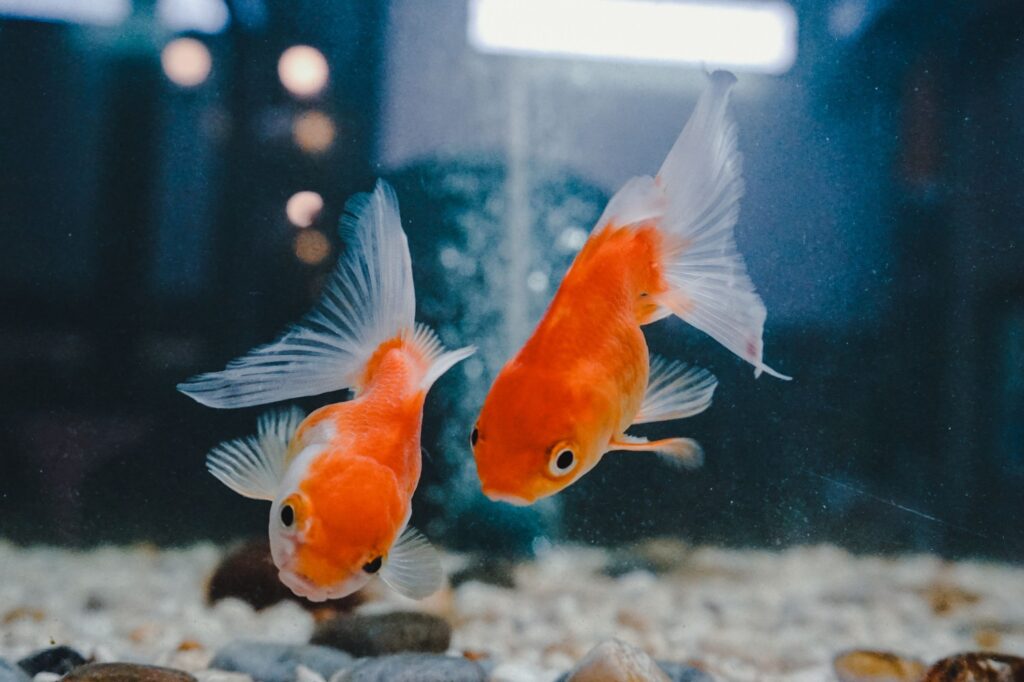
Think of the substrate as the goldfish’s living room floor – it’s where they do their thing. And just as you wouldn’t want your living room floor littered with trash, neither do your goldfish.
What Are Substrates for a Goldfish
The substrate is more than just a pretty layer at the bottom of your aquarium. It’s the playground where your goldfish frolic, rest, and sometimes, even indulge in a little snacking. Beyond being a fishy favorite, substrates are also the thriving grounds for beneficial bacteria that play a pivotal role in maintaining a healthy aquarium environment.
To grasp the full spectrum of importance substrates hold for goldfish, have a look at Substrates for Goldfish Tanks: What You Need to Know. This guide will offer a deeper dive into why the substrate matters and how to choose the best one for your aquatic pets.
Types of Substrates Suitable for Goldfish
Goldfish, those delightful aquatic rascals, are pretty adaptable when it comes to the bottom of their tank. If you’re deciding between substrates, both sand and gravel are top contenders. Sand is a favorite because goldfish absolutely relish the opportunity to sift through it, nosing around for tidbits of food. On the other hand, gravel can seem like a playpen of marbles for these spirited swimmers. If you’re concerned about your goldfish eating directly from the tank floor, textured marbles can be a viable option. Wondering about the possibility of your goldfish ingesting sand? Check out Will Goldfish Swallow Sand? Additionally, if you’re debating the necessity of substrates altogether, you might find Do I Need Substrates for My Goldfish Tank? insightful.
Why Substrate Selection is Crucial
Just like the age-old debate between hardwood and carpet for our homes, selecting the right substrate isn’t just about boasting a chic aquarium design. It’s a crucial decision that goes beyond aesthetics; it centers around cleanliness and the overall health of your fishy friends. Some substrates make maintenance and cleaning a breeze, while others are particularly adept at fostering a balanced seafloor ecosystem. Imagine having beneficial bacteria in your tank acting like a dedicated cleaning crew, tirelessly working to keep things ship-shape.
Now that we’ve skimmed the surface of substrate significance, it’s time to immerse ourselves in the deeper waters of making the best choice. Ready to embark on this aquatic adventure? Grab your snorkel and dive with us into the substrate sea. And if you’re wondering specifically about the goldfish connection, Are Substrates Good for Goldfish? will provide more insights. Dive in!
Choosing the Right Substrates
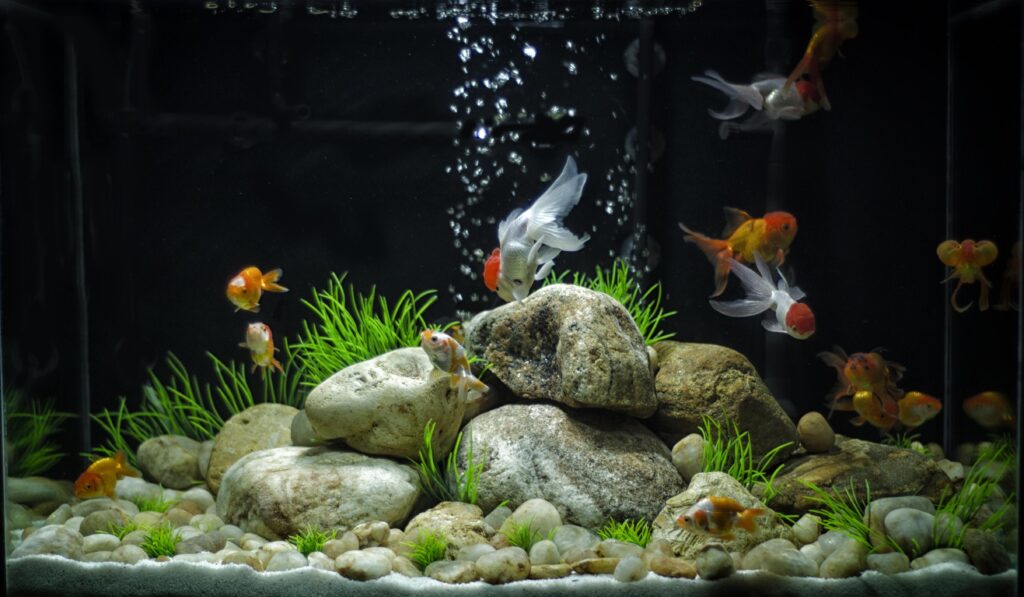
Getting the perfect substrate for your goldfish is no less complicated than selecting your first superhero action figure (oh, the joy!). Not all substrates are ‘goldfish-friendly’.
Factors to Consider in Selection
When choosing the substrate, think like a matchmaker. Consider the size, shape, and color of the substrate. Choose small, round grains (think peas, not beach sand). These are easy on the fins and provide room for good bacteria to grow.
Watch out for substrates with sharp edges. Imagine having to tiptoe over a floor full of Lego blocks all day – ouch! You wouldn’t want that for your fish, would you? Also, opt for darker substrates. They not only camouflage fish poop (saving you frequent cleanups) but also make your goldfish’s color pop. They’ll thank you with a showy swim-by every now and again.
Recommended Substrate Products
Before you get lost in the labyrinth of aisles at your local pet store, take a moment to consider some top-notch substrate recommendations. Seachem Flourite Black Clay Gravel and Spectrastone Shallow Creek Gravel have earned their place in the spotlight. Why? Well, besides being ‘fish-friendly’, they are rich in essential minerals and, not to mention, are total showstoppers when laid out in the aquarium.
However, if you’re feeling a tad adventurous, don’t hesitate to concoct your own substrate mixture. A blend of sand and small pebbles often sets the stage for a dynamic underwater environment. Just remember the golden rule: sand as the base layer, crowned by pebbles on top. With this setup, you’re creating a royal chamber for your goldfish monarchs!
Interested in more specific product recommendations? Check out 5 Best Sands for Goldfish Tanks., 5 Best Substrates for Goldfish Tanks of All Sizes, and 5 Best Gravels for Goldfish Tanks. Dive deeper into each option to ensure your tank is fit for a king—or in this case, your cherished goldfish!
Avoiding Unsuitable Substrates
Stay away from substrates that mess with the water chemistry – such as Dolomite or Crushed coral. They tend to raise PH levels and can trigger a disastrous episode of ‘days of our goldfish lives.’
Even worse are dyed substrates. If the color comes off on your hands, imagine what it could do to your fish? You only need to worry about fashion disasters, not your goldfish sporting a tie-dye look!
And now you have the low-down on picking the right substrate! Remember to take your time and think like a fish. Next up, we’ll dive into the exciting world of cleaning substrates. Fishing waders optional, of course!
Cleaning Substrates

Let’s talk dirty: substrate dirty, more accurately. Now, keep your mind out of the gutter and focus on your goldfish tank. Because just like you wouldn’t want to live in dirty surroundings, neither does your pet fish.
Importance of Regular Cleaning Substrates
First things first, let’s face this truth bomb: regularly cleaning your substrate is not for the faint-hearted or the very lazy. This task is not just about maintaining a spick-and-span fishtank. Consistent cleaning is crucial to maintain a healthy environment, free of harmful bacteria, traces of food, and fishy-poo (yes, it’s a thing).
Step-by-Step Cleaning Substrates
Getting your sleeves wet isn’t all that tough, though. Here’s a doable, step-by-step guide: first, remove your little fishy with care. Next, scoop out the substrate and soak it in a concoction of warm water and mild dish soap. With a brush, gently scrub the substrate; rinse thoroughly; leave to dry. Ta-da, you just scored a spotless substrate!
Common Mistakes in Cleaning Substrates
Before you go all-in on this cleaning spree, beware of the common goof-ups. Overcleaning, using harsh cleaners, and not rinsing enough are cardinal sins. They could make your substrate a hellscape for our aquatic buddies. Remember, our aim is a clean, not sterility!
Now that we’ve rid the substrate of muck, what’s next? In the upcoming section, we’ll dive into maintaining substrate health. Because, let’s be honest, we don’t want to clean all the time, do we? The trick is in maintaining the substrate to avoid regular deep cleans. Stay tuned and hang onto your nets, it’s about to get interesting.
Maintaining Substrate Health

So, you’ve got your substrate sorted and squeaky clean. But how do you keep it that way? Lend me your ears, or rather your eyes – let’s dive into maintaining substrate health.
Monitoring Substrate Health
Keeping your little goldfish buddies happy involves regular check-ups of their “flooring”. You don’t need superhero powers or fancy tools. Just set aside some time each week to eyeball the substrate. Look out for discoloration, unwanted guests (like pests), or anything out of the ordinary.
Signs of Substrate Problems
As it turns out, your substrate can’t turn red in the face or have a fever if it’s sick – but there are some signs to pinpoint. Substrate gone darker? An algae overgrowth. Smelling funky? Decaying matters might be the naughty fellows. Visible debris? Unwanted leftovers glaring at you. Noticing these signs early will save you and your goldfish a lot of trouble.
How to Address and Prevent Issues
Feeling like a substrate doctor yet? Time to administer some treatments. For discoloration, lower the light levels. For bad smells, remove the decaying matters. For visible debris, a good clean up will do the trick. Prevention is always better than a cure – try not to overfeed your goldfish and keep a balanced light period.
Now that we’ve brushed up on how to maintain substrate health, let’s reel in some extra tips and tricks to keep your aquarium running smooth as a whistle. Whether you’re a newbie or a seasoned fishkeeper, the upcoming section offers some golden nuggets.
Extra Tips and Tricks

Now that you’re a substrate-cleaning master, it’s time to level up your game. This segment will reveal some secret cheat codes—quick tactics, longevity hacks, and myth busting to enhance your substrate maintaining game. Ready to bubble up?
Quick Cleaning Substrates
Who wants to waste precious time when your goldfish is swimming his latest Olympic championship lap? Precisely no one! One tip is to lean on a gravel vacuum. This superhero dirt-buster will clean the substrate without disturbing your scaly friend or his plant buddies. Another quick trick is to clean in sections. Split the tank into pizza slices and vacuum one slice at a time.
Ensuring Longevity of Substrates
Most substrate doesn’t age like fine wine. If it did, we could all sip back and relax! Instead, you’ll need to keep an eye on it and replace anything that looks worn out. Rinse new substrate thoroughly before adding it to the tank to prevent dust and cloudiness.
Banishing Myths About Substrates
Beware of tall fish tales! An example? That myth about goldfish not needing substrate. In reality, goldfish love to scavenge and root in substrate. Without it, they could become bored and stressed. So ignore the rumors, arm yourself with this dynamite guide, and give your goldfish a home to be proud of!
Now you have all the necessary tips, tricks, and information about substrates to make your aquarium the talk of the tank town! Remember, a happy substrate means a happy goldfish. Pass on this wisdom and keep your aquatic buddy swimming brightly.
Wrap Up
In conclusion, choosing the apt substrate for your goldfish plays a fundamental role in their wellness. From understanding what substrates are, to learning about the types suitable for goldfish, we’ve emphasized its importance. Therefore, it’s also critical to know how to choose and avoid certain substrates, considering several factors for those decisions.
Moreover, frequent substrate cleaning should not only be done, but be done right to avoid common blunders. Monitoring substrate health and recognizing signs of potential problems helps to maintain your aquatic buddy’s environment in top condition. Lastly, longevity of substrates can be ensured by using swift maintaining tactics and dismissing myths. As they say in the Goldfish world, it’s all about the base…substrate that is!
Frequently Asked Questions (FAQ)
Question: What exactly are substrates in a goldfish aquarium?
Answer: Substrates are basically the material that covers the bottom of your aquarium. They provide a place where goldfish can forage and rest, and they also function as a growing medium for plant life.
Question: Why is it essential to choose the right substrate for my goldfish?
Answer: Each type of substrate comes with unique properties that can either benefit or compromise your goldfish’s health. The right substrate can help maintain water quality, support beneficial bacteria growth, and ensure your goldfish’s comfort.
Question: How often should substrates be cleaned?
Answer: Generally, substrates should be cleaned every two to four weeks. However, this can vary depending on the substrate type and the behavior of your goldfish.
Question: What are some signs that my substrate is having problems?
Answer: If your water becomes murky, you notice a foul odor, or your goldfish begins behaving unusually, these could be signs that your substrate needs attention.
Question: What common mistakes should I avoid while cleaning my substrate?
Answer: Overcleaning, using chemicals or soap, not rinsing the substrate properly, and disrupting the goldfish too much during cleaning are all common mistakes to avoid.
Question: How can I ensure the longevity of my substrates?
Answer: Regular substrate maintenance, including proper cleaning, rotation, and occasional replacement, can ensure its longevity. Regularly monitoring the water quality and goldfish behavior can also help.

